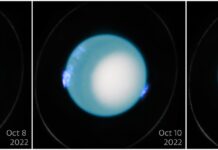Samsung’s Landmark Role in Quantum Dot Technology: Pioneering Innovation That Led to Nobel Recognition
Quantum dots have emerged as a revolutionary material in the world of display technology, captivating the industry with their unparalleled ability to reproduce colors with extraordinary accuracy. The journey of quantum dots from a scientific curiosity to a cornerstone of modern display technology is largely attributed to the pioneering efforts of Samsung Electronics. In 2015, Samsung introduced the world to its SUHD TVs, which featured the first-ever cadmium-free quantum dot technology, setting a new benchmark in the industry. This innovation not only reshaped the landscape of display technology but also played a pivotal role in the awarding of the 2023 Nobel Prize in Chemistry for the discovery and synthesis of quantum dots.
The Genesis of Quantum Dot Technology
Quantum dots, minuscule semiconductor particles, first caught the attention of the scientific community in the 1980s. Researchers Aleksey Yekimov and Louis E. Brus made significant contributions by exploring the quantum confinement effect and the size-dependent optical properties of these particles. The field gained further momentum in 1993 when MIT’s Moungi Bawendi developed a reliable method for synthesizing quantum dots. By 2001, Taeghwan Hyeon from Seoul National University introduced the "heat-up process," a technique that allowed for the production of uniform nanoparticles without size-selective separation, marking a significant advancement in the field.
Despite these breakthroughs, the path to commercializing quantum dots was fraught with challenges. The primary hurdle was the reliance on cadmium, a toxic element that raised environmental and health concerns. Cadmium-based quantum dots, while effective, were not a sustainable option for commercialization due to their potential harm to humans and the environment.
Overcoming the Cadmium Challenge
Cadmium selenide (CdSe) was the material of choice for early quantum dot research, owing to its ability to form stable semiconductors through ionic bonding with selenium and other elements. However, the use of cadmium was restricted under the European Union’s Restriction of Hazardous Substances (RoHS) Directive, prompting researchers to seek alternative materials.
Indium phosphide (InP) emerged as a viable alternative to cadmium. Unlike ionic bonds, indium’s covalent bonds with phosphorus presented a more complex chemical challenge. Covalent bonds are typically less stable and more prone to defects, making the synthesis of indium-based quantum dots a more intricate process. Despite these challenges, Samsung Electronics remained committed to developing a cadmium-free solution.
Samsung’s No-Compromise Approach
Samsung’s dedication to consumer safety led to the development of the world’s first no-cadmium quantum dot material in 2014. Sanghyun Sohn, Head of Advanced Display Lab at Samsung Electronics, emphasized the company’s zero-cadmium policy, stating, "There is simply no room for compromise when it comes to consumer safety." This principle was the driving force behind Samsung’s decision to pursue indium phosphide-based quantum dots, despite the inherent difficulties in synthesizing them.
To ensure the durability and performance of these quantum dots, Samsung introduced a triple-layer protective coating technology. This innovation protected the indium phosphide nanoparticles from external factors such as oxygen and light, ensuring both image quality and longevity. In 2015, Samsung launched the world’s first commercial SUHD TV featuring no-cadmium quantum dots, setting a new industry standard.
Setting the Standard for Quantum Dot Displays
Samsung’s commitment to innovation did not stop with SUHD TVs. In 2017, the company introduced QLED TVs, further solidifying its position as a leader in display technology. The introduction of QD-OLED TVs in 2022 marked another milestone, combining quantum dots with an OLED structure to deliver superior performance in terms of response times, contrast ratios, and color accuracy.
QD-OLED technology, which integrates quantum dots into the self-emissive structure of OLED, represents the next generation of display technology. This innovation earned Samsung the Display of the Year award in 2023 from the Society for Information Display (SID), underscoring the company’s leadership in the field.
The Impact of Quantum Dots Beyond Displays
While quantum dots are best known for their application in displays, their unique optical properties have the potential to revolutionize other fields, including solar energy, medicine, and quantum computing. However, it is in the realm of display technology that quantum dots have found the most success, thanks in large part to Samsung’s groundbreaking work.
The commercialization of quantum dot technology by Samsung has not only advanced the field but also contributed to the broader recognition of this material’s significance, as evidenced by the 2023 Nobel Prize in Chemistry. According to Taeghwan Hyeon, "Samsung’s QLED represents one of the most significant achievements in nanotechnology. Without its commercialization, it would have been difficult for quantum dots to earn Nobel recognition."
Looking to the Future: Samsung’s Vision for Quantum Dot Technology
Samsung’s vision for the future of quantum dot technology is centered on further innovation and expansion. The company is actively exploring the development of self-emissive quantum dots, which would eliminate the need for an external light source. This advancement would enable quantum dots to emit light independently, paving the way for applications in virtual and augmented reality.
As the industry continues to evolve, Samsung remains at the forefront of display innovation, driven by a commitment to excellence and a vision for a future where displays are indistinguishable from reality. With its bold technological vision and unwavering dedication to quality, Samsung is poised to continue shaping the future of display technology and redefine what is possible with quantum dots.
In conclusion, Samsung’s dedication to advancing quantum dot technology has not only transformed the display industry but also set a new standard for innovation and safety. By prioritizing consumer safety and environmental responsibility, Samsung has demonstrated that technological advancement and ethical considerations can go hand in hand, leading the way for future breakthroughs in the field.
For more Information, Refer to this article.




























![samsung tvs and displays samsung quantum dots technology qled tvs quantum dots experts interview par.jpeg How Samsung’s Engineering Feat Became a Catalyst for Scientific and Industry Advancement [Interview on Real Quantum Dots Part 2.]](https://www.hawkdive.com/media/samsung-tvs-and-displays-samsung-quantum-dots-technology-qled-tvs-quantum-dots-experts-interview-par.jpeg)





